Common Salsify (Tragopogon porrifolius) is a versatile plant known by many names, including Salsify, Jack Go To Bed, Jerusalem Star, Oyster Plant, Purple Goat’s Beard, Purple Salsify, and Vegetable Oyster Plant. Belonging to the Asteraceae family, this unique plant is native to the Canary Islands, Europe, and parts of Africa.
Renowned for its edible flowers and roots, common salsify is often compared to vegetables like parsnips and carrots due to its similar planting and growing conditions. This hardy plant thrives in well-drained soil and sunny locations, making it a great addition to home gardens. Its distinct flavor, often likened to oysters, adds a unique touch to culinary dishes, earning it the name “oyster plant.”
With its adaptability and practical uses, common salsify is a rewarding plant for gardeners and cooks alike, blending ornamental appeal with culinary versatility.
| Common name | Common Salsify, Salsify, Jack Go To Bed, Jerusalem Star, Oyster Plant, Purple Goat’s Beard, Purple Salsify, Vegetable Oyster Plant |
| Botanical name | Tragopogon porrifolius |
| Family | Asteraceae |
| Species | porrifolius |
| Origin | Canary Islands, Europe to the Mediterranean |
| Life cycle | Biennial |
| Plant type | Edible |
| Hardiness zone | 5, 6, 7, 8, 9 |
| Sunlight | Full Sun |
| Maintenance | Low |
| Soil condition | Clay |
| Soil ph | Alkaline |
| Drainage | Well-Drained |
| Growth rate | Medium |
| Spacing | 12 in. – 3 ft. |
| Harvest time | Fall |
| Flowering period | Spring |
| Flower color | Pink |
| Leaf color | Green |
| Fruit color | Brown, Copper |
| Stem color | Green |
| Fruit type | Achene |
| Leaf benefit | Edible |
| Flower benefit | Long Bloom Season |
| Garden style | Butterfly Garden |
| Uses | Meadow |
I. Appearance and Characteristics
Tragopogon porrifolius is a plant cultivated for its ornamental flower and edible root. It also grows wild in many places and is one of the most widely known species of the salsify genus, Tragopogon. It is commonly known as purple or common salsify, oyster plant, vegetable oyster, Jerusalem star, Jack go to bed, or simply salsify (although these last two names are also applied to other species).
The Latin specific epithet porrifolius means “with leaves like leek” (Allium porrum).
Tragopogon porrifolius is a common biennial wildflower, native to southeast Europe and north Africa, but introduced elsewhere, for example, into the British Isles (mainly in central and southern England), other parts of northern Europe, North America and southern Africa, and in Australia. In the United States, it is now found growing wild in almost every state, including Hawaii, except in the extreme south-east.
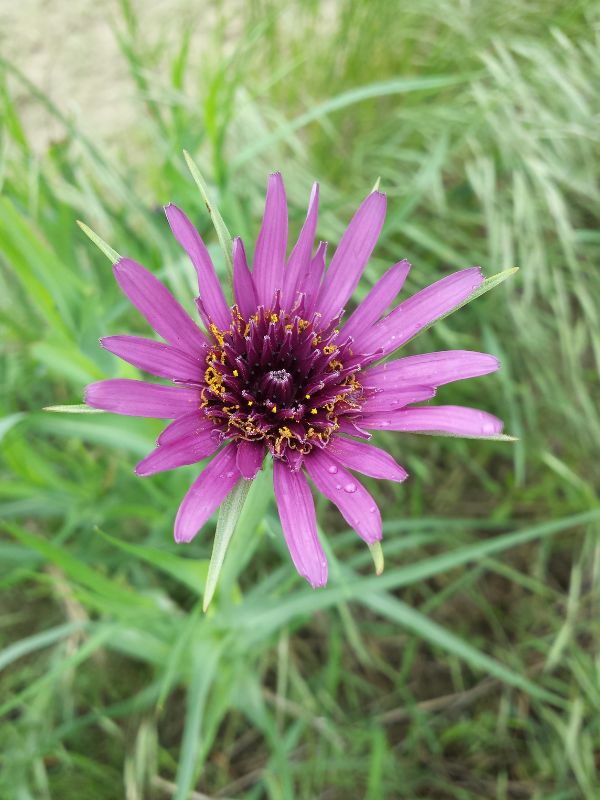
The plant grows to around 1.2 m (4 ft) in height. As with other Tragopogon species, its stem is largely unbranched and the leaves are somewhat grasslike. It exudes a milky juice from the stems. The taproots can become 15–30 cm (6–11+3⁄4 in) long and 2–5 cm (3⁄4–2 in) thick.
In the UK it flowers from May to September, but in warmer areas such as California it can be found in bloom from April. The flower head is about 5 cm (2 in) across and each is surrounded by green bracts which are longer than the petals (technically, the ligules of the ray flowers). The flowers are like that of Tragopogon pratensis, but are larger and dull purple, 3–5 cm (1+1⁄4–2 in) across. The flowers are hermaphroditic and pollination is by insects.
The fruits are beaked achenes, rod-shaped with light ribs. They have hairs at one end that facilitate wind dispersal. The achenes are 10–17 mm long and 1–3 mm wide without counting the beak, which is up to 55 mm in length. When the fruits are formed fully, the hairs from the fruits give the appearance of a ball of fluff which gives the plant its name “goatsbeard”.
II. How to Grow and Care
Sunlight
Common salsify thrives best in conditions of full sun, requiring bright and direct light for optimal growth and vigor. Although common salsify has a tolerance for partial sun, prolonged exposure to less intense light may result in leggy stems and reduced flowering potential. Deviations from full sunlight can also impact the robustness of root development, which is crucial for common salsify’s health as a root vegetable.
When grown outdoors, common salsify should be planted in locations that receive unfiltered sunlight for the majority of the day. The plant’s adaptability to light exposure includes an ability to moderately withstand some shade without significant detriment, but full sun is paramount for achieving peak condition.
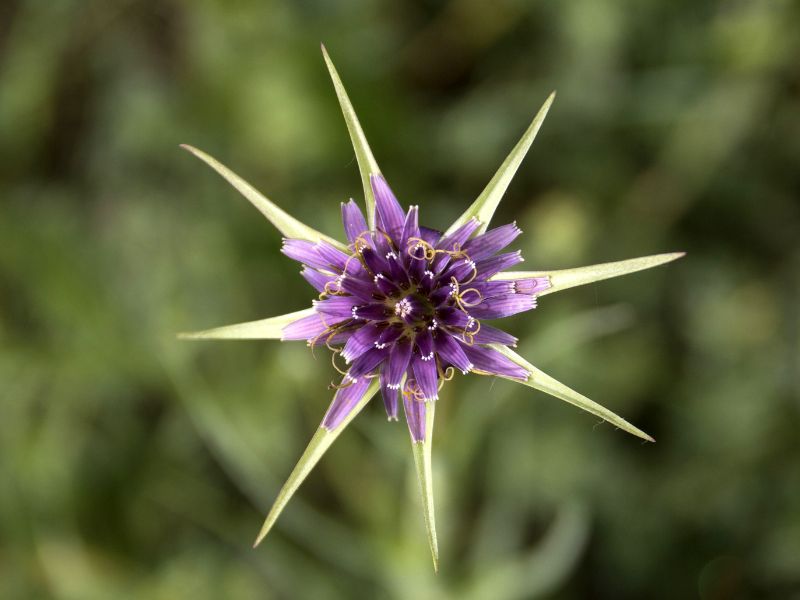
Watering
Thriving in its native Mediterranean climate, common salsify is well-adapted to environments with moderate moisture. This species has a preference for consistent hydration but can withstand short periods of dryness. Watering should occur once every week to maintain optimal health. In outdoor settings, common salsify is known for its resilience and ability to thrive in varying conditions, making it an excellent choice for gardeners looking to add a drought-tolerant yet water-appreciative herbaceous element to their landscape.
Fertilizing
For common salsify, applying high-nitrogen fertilizer promotes lush vegetative growth, vital for its root development. Fertilize monthly during the growing season. Use a balanced 10-10-10 formula sparingly; too much can inhibit flowering. Gradually reduce feeding as winter approaches.
Light application rates ensure robust growth without overfeeding. Employ slow-release forms to avoid nutrient runoff and protect common salsify’s delicate root system. Seasonal adjustments maintain plant health and prevent wasting resources.
Practical tip: Apply during cool mornings or cloudy days to minimize root burn risk.
Sowing and soil
Salsify is grown similarly to other root vegetables like parsnip and carrots and thus require similar attention. Sowing can be done in late summer or early winter to foster an early growth. Planting can also be done in early spring about 100 days before the first frosts in a well prepared soil, preferably a loam or silt-loam. It should be done at the depth of 1.3 to 2 cm. Spacing between rows should be around 45 to 60 cm and the seeds should be separated by 3 cm approximately.
This represents 12 g of seeds per 10 m of row for the cultivar ‘Mammoth Sandwich Island’. A thinning to 5 cm between the plants is needed when the seedlings reach 5 cm. T. porrifolius needs deep and loose soils which are not too dry for a good development of the taproot. Stony or waterlogged soils have negative effects on yields and hamper harvesting.
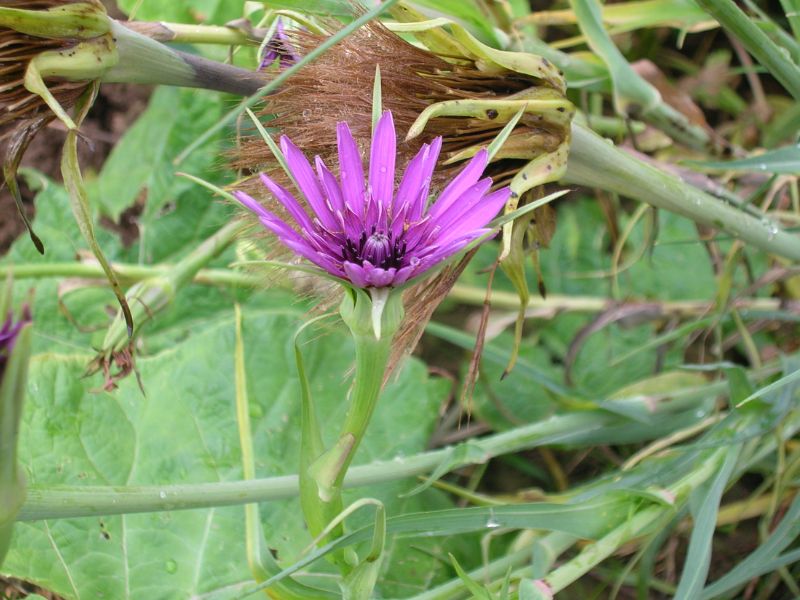
Other root crops, legumes and cereals have been mentioned as possible pre cultures. T. porrifolius is a moderate feeder, therefore the application of fresh manure does not benefit yields. During the main growing period a good water supply prevents potential branching of the taproot.
Climate
There are no specific requirements known for the cultivation of T. porrifolius, but they have been successfully cultivated in temperate climate zones. The seedlings need a temperature of 8–16 °C to germinate and the plant will freeze between −1.1 and −1.6 °C. T. porrifolius can cope with low temperatures and is not injured by light freezing.
Growth and development
The seeds need 8–10 days of germination time. T. porrifolius is a biennial plant. In the first year only the vegetative parts of the plant are developed. In autumn, the energy is stored in the root system, which is depending on the variety more or less branched. In the second season the generative purple flowers evolve. They bloom from early to mid summer.
Pests and Diseases
Few pests or diseases affect T. porrifolius. White rust (Albugo tragopogonis) is the most common disease of T. porrifolius. Closely related wild species (e.g. Tragopogon pratensis), black salsify (Scorzonera hispanica), gerbera (Gerbera) and sunflower (Helianthus annuus) are also found to be hosts of this fungus. At an early stage chlorotic spotting is visible on leaves and stems. These develop during the course of disease into small white blisters.
Occasional problems are reported with rust diseases caused by Puccinia hystericum, Puccinia jackyana and Puccinia scorzonera. Mulching with oats and the use of spring vetch (Vicia sativa) or blue tansy (Phacelia tanacetifolia) as cover crops reduces the number of fungi infecting seedlings and roots. The following fungi have been isolated from T. porrifolius seedlings and roots: Alternaria alternata, Fusarium culmorum, Fusarium oxysporum, Penicillium spp., Rhizoctonia solani and Sclerotinia sclerotiorum.
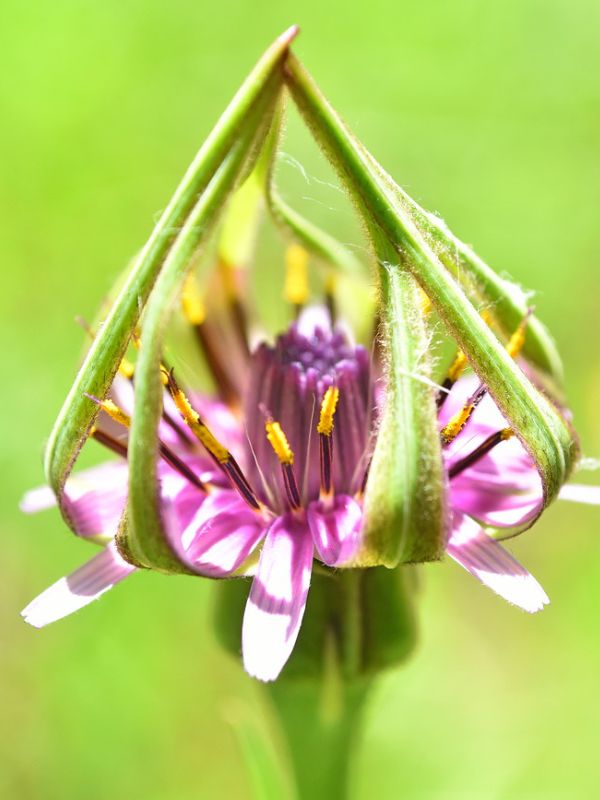
When the rows are planted too close together, powdery mildew (Erysiphe cichoriacearum) can affect the plants.
When the roots are left in the ground over winter, mice and voles may nibble them.
III. Uses and Benefits
The plant is edible, but the roots and leaves are most palatable when collected before the flower stalk is produced. The root is noted for having a mild taste when uncooked, described as like asparagus or oysters, from which the plant derives its alternative name of oyster plant. The outer layers can be scraped off, with the root dipped in cold water to preserve its colour.
If too tough for eating, they can be boiled with a pinch of baking soda and a change of water. Raw young roots can be grated for use in salads, but older roots are better cooked. They can be added to soups, stews or stir-fries. Salsify purée (alone or including potato) is recommended with fish.
The flowering shoots can be used like asparagus, either raw or cooked and the flowers can be added to salad, while the sprouted seeds can be used in salads or sandwiches.
Raw salsify is 77% water, 19% carbohydrates, 3% protein and contains negligible fat (table). In a 100 gram reference amount, raw salsify supplies 82 calories and moderate contents of riboflavin, vitamin B6, vitamin C, manganese and phosphorus.
IV. Harvesting and Storage
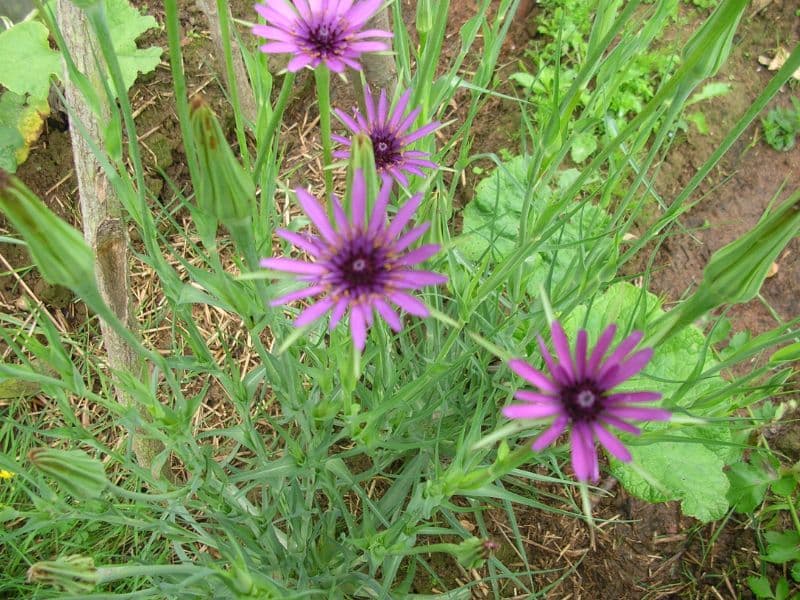
The taproots are usually harvested from late autumn onwards (later than October in the Northern Hemisphere) and during winter. Harvesting after a frost is favoured to improve the taste of the root. After flowering, the taproot becomes stringy and inedible. The taproots can be stored in traditional clamps although refrigerated storage has been recommended at 0 °C and 90–95% relative humidity for 2–4 months.
Find Where to Buy the Best Common Salsify (Tragopogon porrifolius)





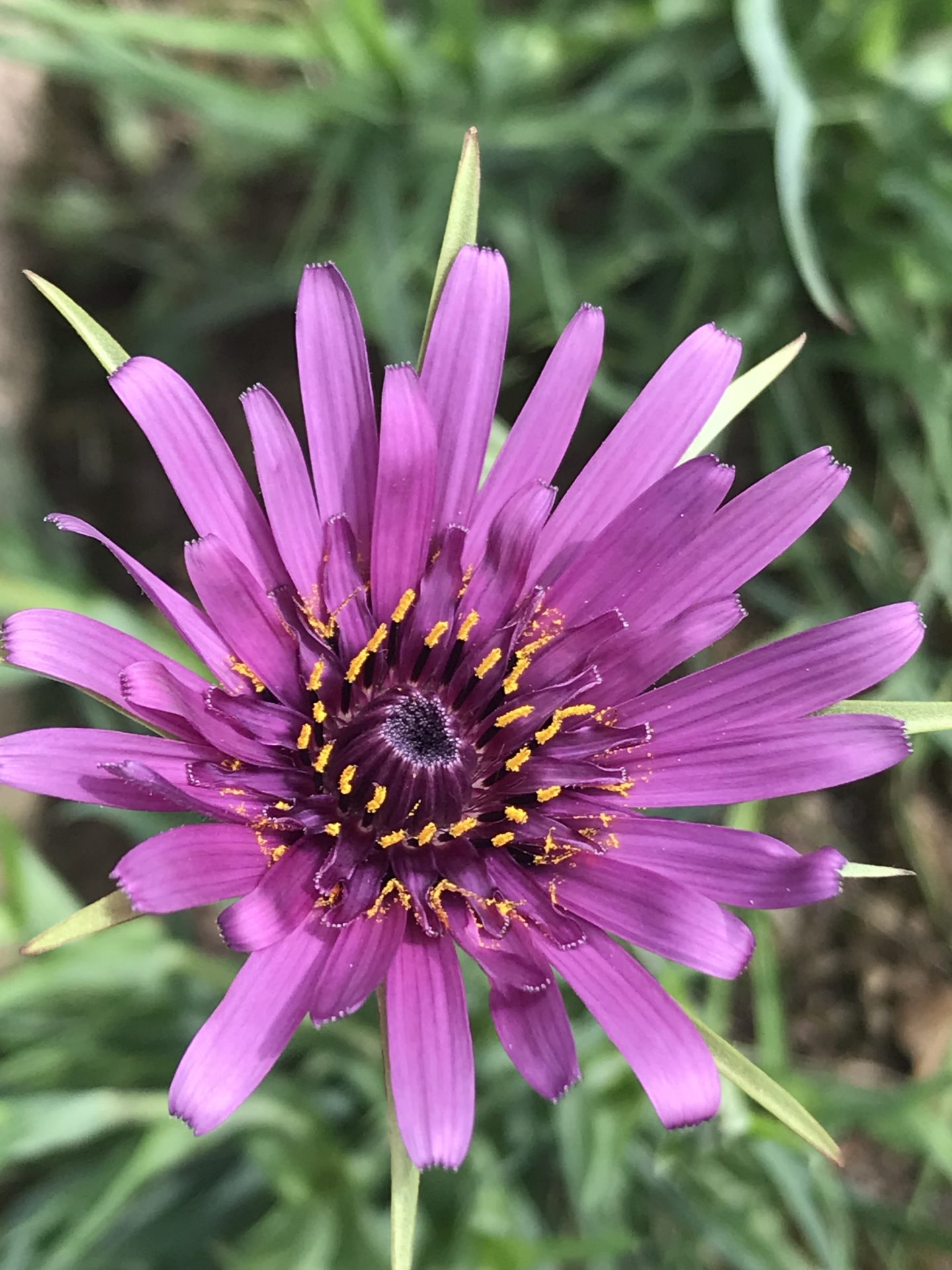

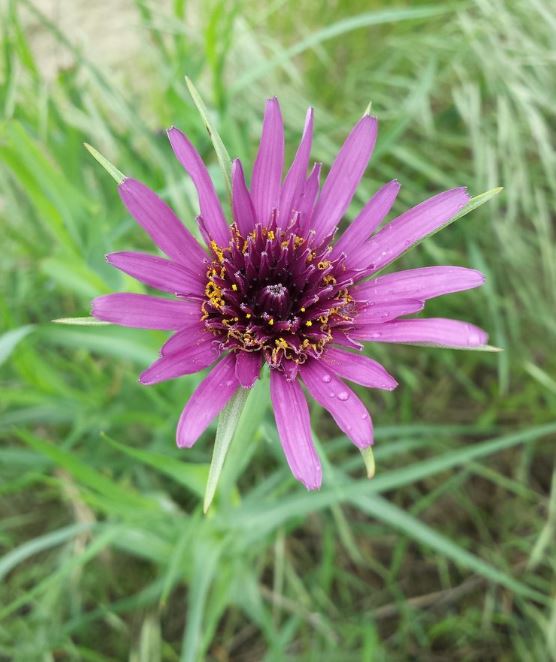

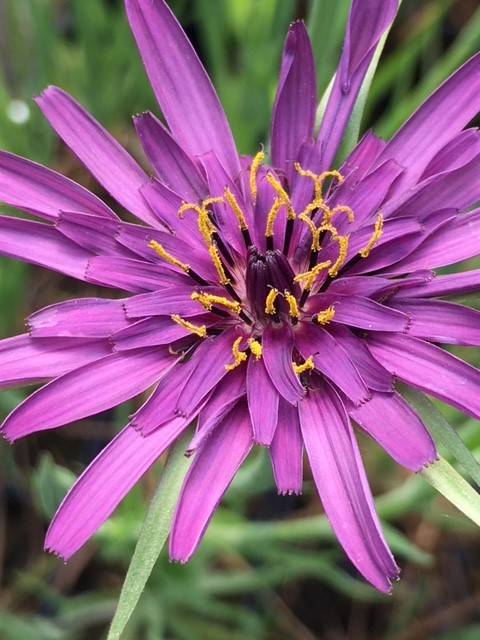


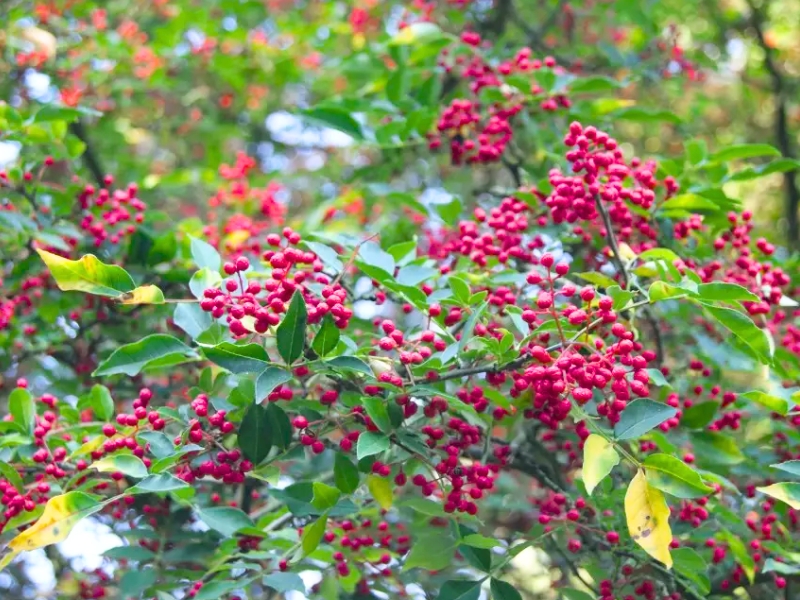
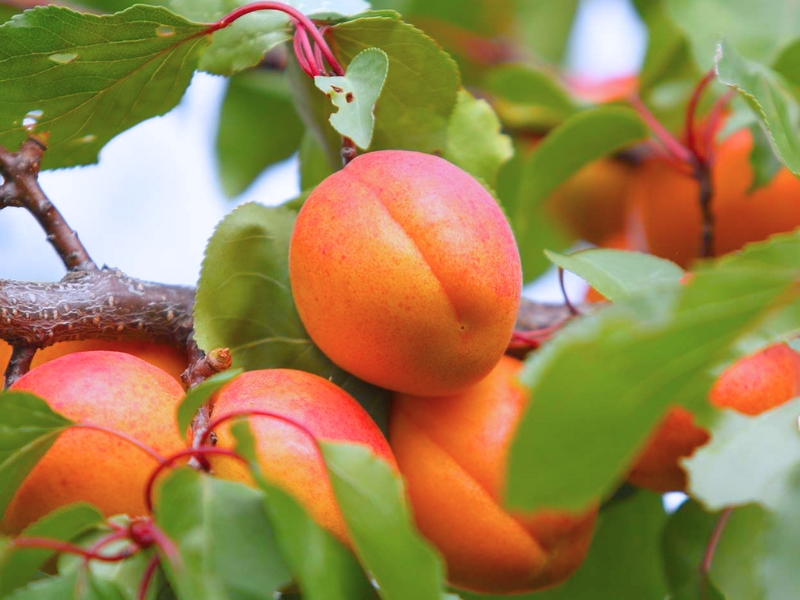
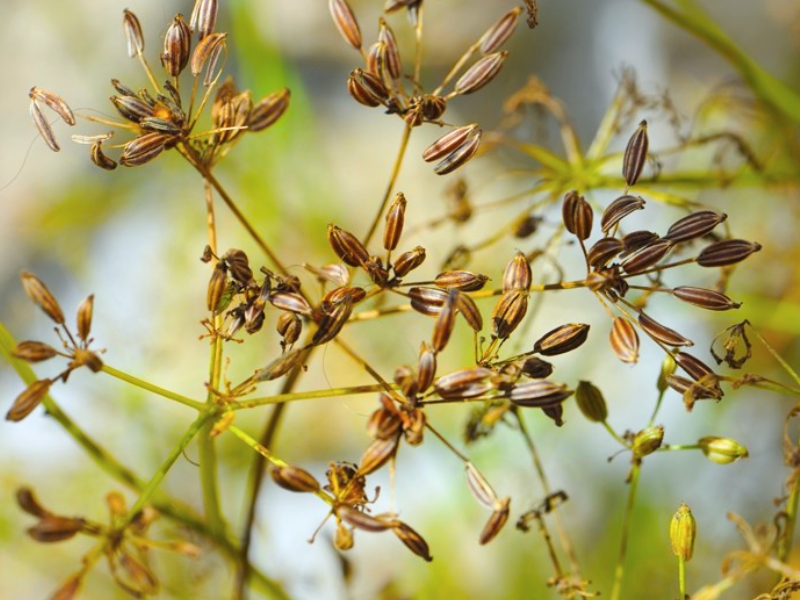
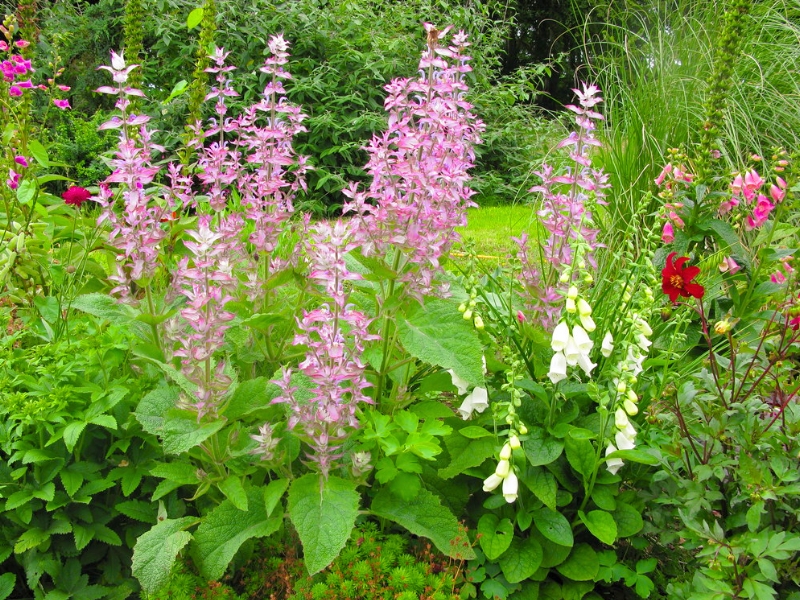
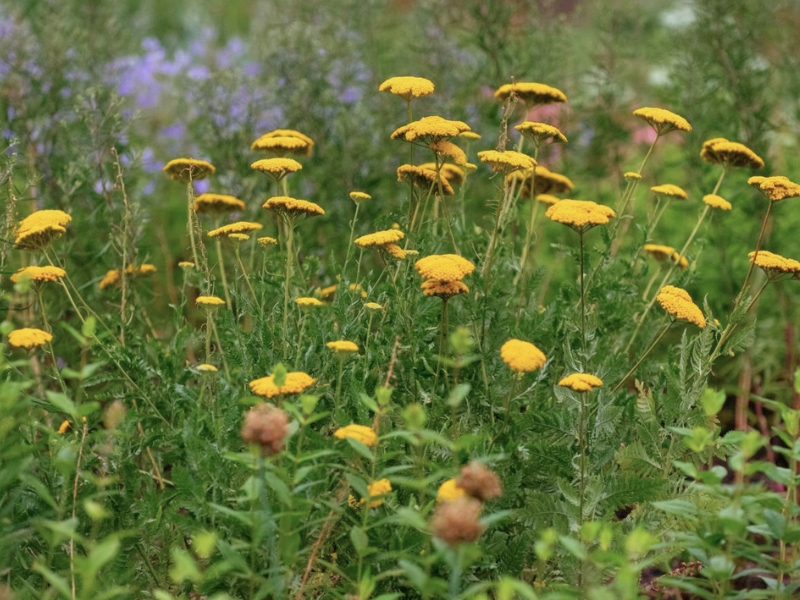
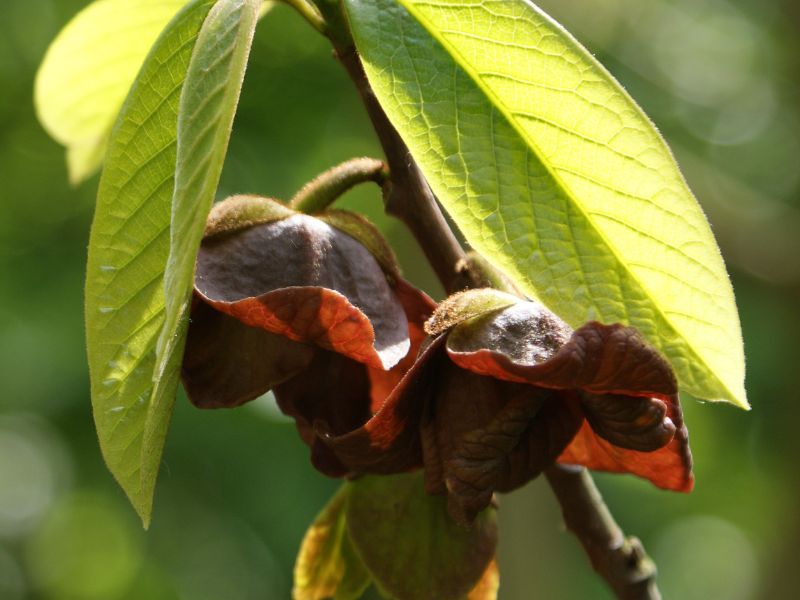
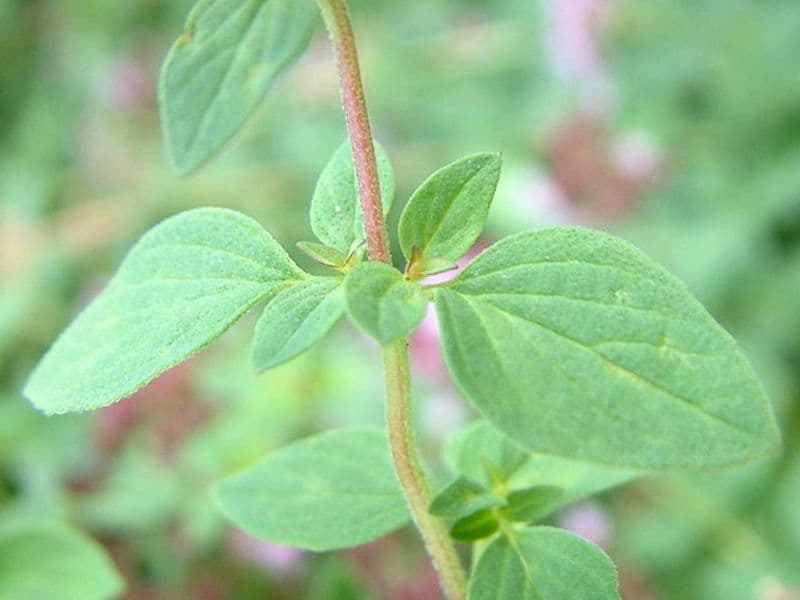
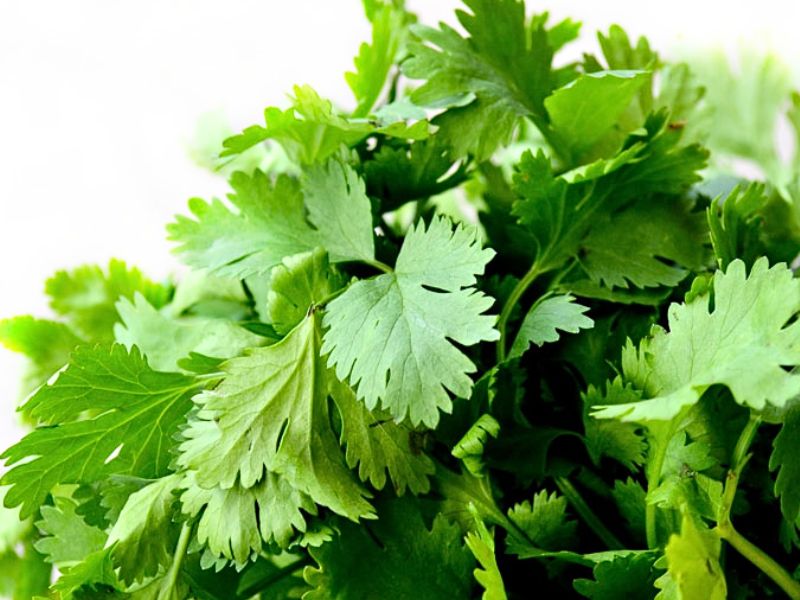
Leave a Reply